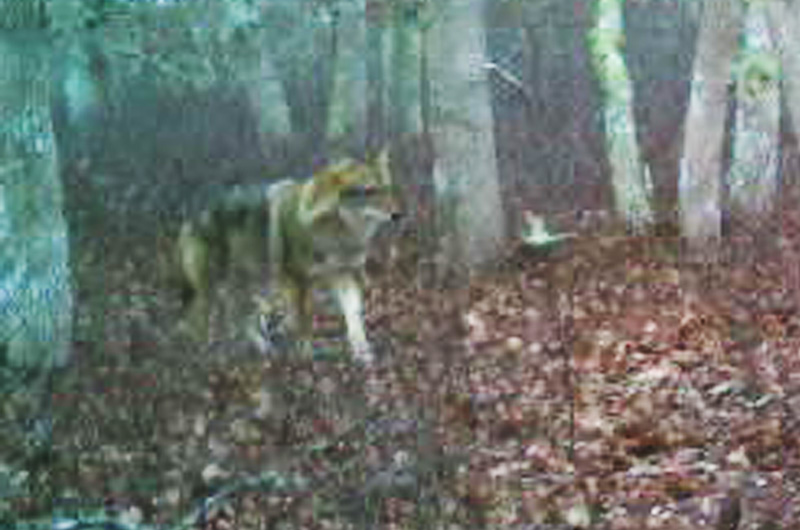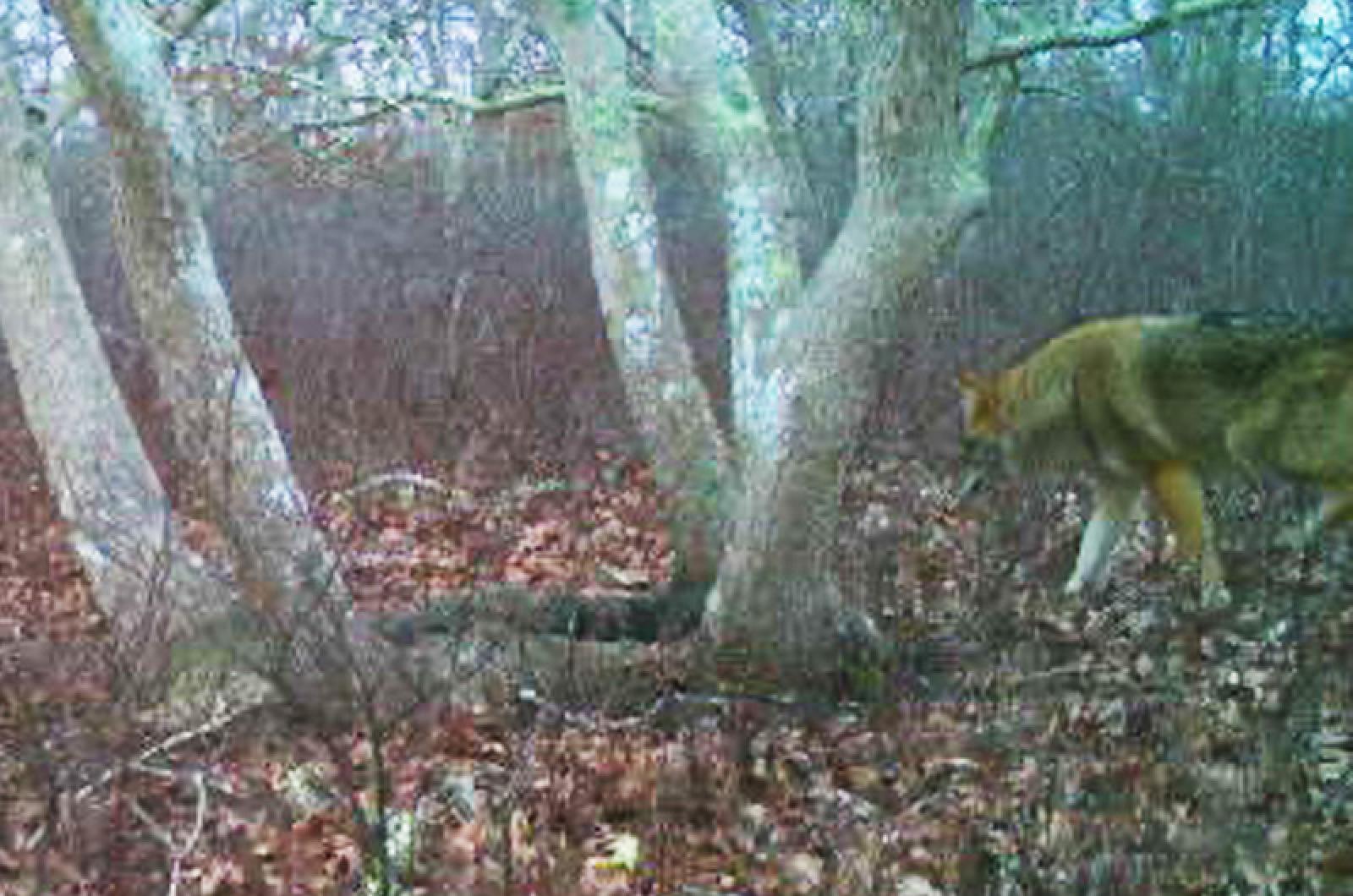Footage of a live Eastern coyote was recorded on a trail camera in Oak Bluffs, close to Goodale’s pit, Tuesday afternoon, Island wildlife biologist Gus Ben David confirmed. This is the third confirmed sighting of a live Eastern coyote on Martha’s Vineyard — and the second in the last eight months.
“It was absolutely an Eastern coyote,” Mr. Ben David told the Gazette after examining the footage from the trail camera. “This one was a big and bulky animal. It looks like it would be about 50 pounds-plus . . . they have wolf genes in their blood, that’s the reason they’re so large.”
The previous coyote sighting, in May 2019, was recorded in Edgartown near the Road to the Plains and Morning Glory Farm, also with a trail camera, although the image was not as distinct.
Speaking scientifically, Mr. Ben David said he could not say positively if the most recent sighting was the same coyote as the one spotted in May. But he said the animal is quite possibly a second coyote living on the Vineyard.
“The videos aren’t enough to identify it as a separate animal than the one sighted earlier in the year,” Mr. Ben David said. “We can’t definitively say that we have two coyotes on the Vineyard, but it is totally in the realm of reality. My feeling is that we do.”

Mr. Ben David said there are two schools of thought about an established coyote population on the Island.
“If you get an established population, people that have free range chickens and sheep, dogs and cats, would definitely feel the effects of this predator. They are an incredible carnivore,” he said.
He pointed by example to the large flock of free-range grazing sheep that once inhabited Naushon island, which has been reduced significantly as a result of a growing coyote population. The small flock now has to be penned each night. With the recent resurgence in small farming on the Vineyard, Mr. Ben David said coyotes would pose a problem for the agricultural community.
On the other hand, he said the animals have come to the Island naturally and were not introduced by people. Many biologists and ecologists say the most ecologically sound option is to let nature run its course, Mr. Ben David said.
“There are positive effects of a predator in a balanced ecosystem, because there is so much prey. We have to be careful about putting human values on whether they are good or bad. Everything has a niche in a complex ecosystem,” he said.
Mr. Ben David said he has contacted the state Department of Fish and Wildlife to report the coyote sighting. It is currently coyote hunting season in Massachusetts, which runs from Jan. 1 to March 7.
Coyotes are established and breeding on the Elizabeth islands and Cape Cod, but their presence has remained elusive on the Vineyard in the last decade. In the last 10 years, five dead coyotes have washed up along the north side of the Island. Mr. Ben David said it was likely the coyotes attempted to swim, and he said it is likely that the one spotted this week swam from Naushon, the largest of the Elizabeth islands located just four miles from the Vineyard’s north shore.
He said the coyote population on Naushon is thriving. He added that environmental factors, such as overpopulation or a lack of food sources, can force the animals to seek a new domain.
“Animals don’t look across the water and say, that looks like a nice island over there,” Mr. Ben David said. “What could happen is that young coyotes are being pushed out of their territory over there. We’re coming up on mating season. The territorial imperative becomes stronger during these months . . . and territory is one of the limiting factors on wildlife populations.”
Historically, he said the Eastern coyote population was decimated during the colonial era, as lands were cleared for farming and the animals were hunted. They began to return as lands reforested and people reduced hunting efforts. Coyotes have never settled on the Vineyard. But ecology and local prey has changed significantly since then and the animals are adaptive.
“They can live almost anywhere, on the edge of cities or deep in the woods,” Mr. Ben David said. “If they become established on the Vineyard, it will cause a lot of problems for a lot of people.”






Comments (30)
Comments
Comment policy »